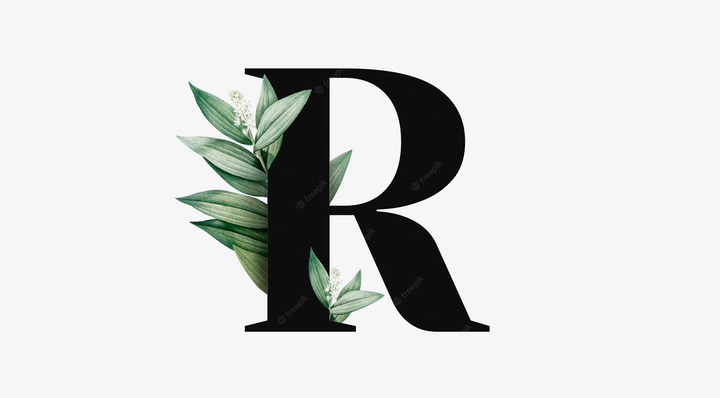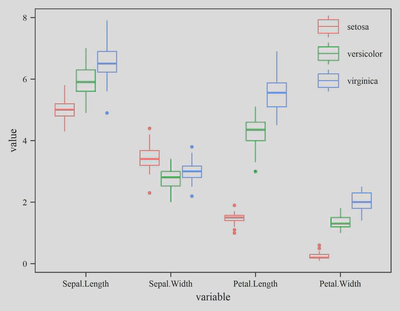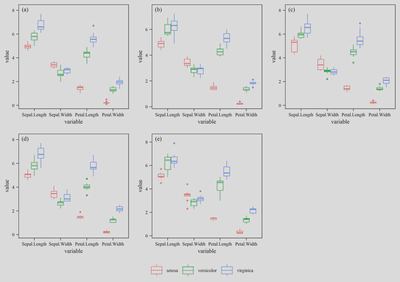R语言箱型图绘制模板

在熟悉绘图函数及其参数设置后,形成一套通用模板有助于提高制图效率。本文展示了几种基于R语言ggplot2包的箱型图绘制代码。
一、单一箱型图
## library
library(reshape2)
library(ggplot2)
## read data
data <- iris
data$Index <- 1:nrow(data)
data_long <- melt(data = data,
id.vars = c("Species","Index"))
## plot
ggplot(data = data_long,
mapping = aes(x = variable,
y = value,
color = Species))+
geom_boxplot(outlier.size = 0.5,
linewidth = 0.3)+
theme_bw()+
theme(text = element_text(family = "serif",
size = 7),
panel.grid.major = element_blank(),
panel.grid.minor = element_blank(),
legend.position = c(0.88,0.84),
legend.title = element_blank(),
legend.background = element_blank(),
axis.text = element_text(color = "black"),
axis.ticks = element_line(linewidth = 0.3))
## save
ggsave("fig1.jpg",
width = 9,
height = 7,
units = "cm",
dpi = 600)

二、多箱型图
## library
library(reshape2)
library(ggplot2)
library(ggpubr)
## read data
data <- iris
data$Index <- 1:nrow(data)
data$Sample <- rep(rep(1:5,10)[sample(50,50)],3)
data_long <- melt(data = data,
id.vars = c("Species","Index","Sample"))
## plotfun
plotfun <- function(data, label){
ggplot(data = data,
mapping = aes(x = variable,
y = value,
color = Species))+
geom_boxplot(outlier.size = 0.5,
linewidth = 0.3)+
annotate("text",
x = 0.65,
y = max(data$value)*1.05,
label = label,
family="serif", size = 2.5) +
theme_bw()+
theme(text = element_text(family = "serif",
size = 7),
panel.grid.major = element_blank(),
panel.grid.minor = element_blank(),
legend.position = c(0.88,0.84),
legend.title = element_blank(),
legend.background = element_blank(),
axis.text = element_text(color = "black"),
axis.ticks = element_line(linewidth = 0.3))
}
## plot
a <- plotfun(data_long[data_long$Sample==1,], "(a)")
b <- plotfun(data_long[data_long$Sample==2,], "(b)")
c <- plotfun(data_long[data_long$Sample==3,], "(c)")
d <- plotfun(data_long[data_long$Sample==4,], "(d)")
e <- plotfun(data_long[data_long$Sample==5,], "(e)")
ggarrange(a,b,c,d,e,
ncol = 3,
nrow = 2,
align = "hv",
common.legend = T,
legend = "bottom")
## save
ggsave("fig2.jpg",
width = 17,
height = 12,
units = "cm",
dpi = 600)
